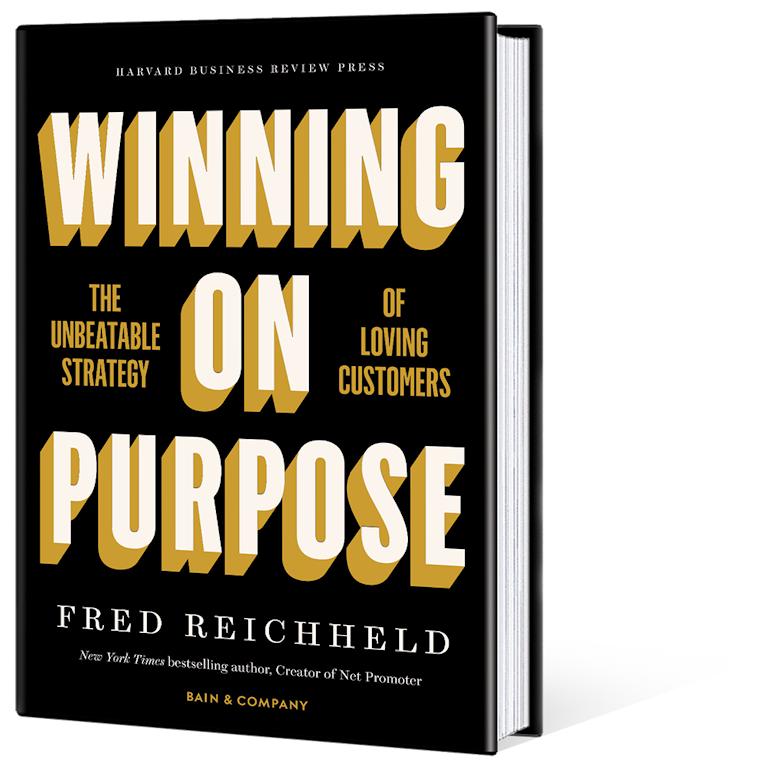 }
}
This article originally appeared on LinkedIn.
Google platforms get billions of hits each day, and its Chrome browser maintains a 65% global market share, 49% in the US. This generates a lot of consumer data, so it made headlines last year when the company announced plans to eliminate third-party cookies from Chrome and offer a more private, context-oriented alternative called FLoC (Federated Learning of Cohorts). The consternation was such that in June the company announced it would push the date of the change to late 2023 in order to give publishers, advertisers, and regulators more time to become comfortable with its new targeted ad technologies.

Winning on Purpose: The Unbeatable Strategy of Loving Customers
This new book by Fred Reichheld, Darci Darnell, and Maureen Burns demonstrates that great leaders embrace a higher purpose to win, and Net Promoter® shines as their guiding star.
Cookies, the backbone of the $455 billion digital advertising universe, are tiny text files placed on your browser by the websites you visit. If a cookie hitches a ride with you from a different domain, it’s known as a “third-party cookie.”
Advertisers use cookies to track us and our interests, to know which websites we visit, how often, and even our location. Cookies are integral to creating targeted ads and measuring their effectiveness.
Sometimes that’s useful and convenient; other times it seems a little creepy. We recently downloaded the Ghostery Chrome extension to see how many groups were tracking us on different sites. The New York Times had 6, The Guardian 8, and CNN topped them both with 25.
To think through the implications of all this, we reached out to John Grudnowski, an expert partner with Bain’s Vector Digital and Sales & Marketing practices and the founder of our digital marketing capability builder FRWD.
John’s take is that many consumers will find that Google’s new policy improves their online experience, in part because it will bring some relief from today’s very imperfect virtual advertising world. A kind of Frankenstein’s monster of amalgamated third-party data, this mix can inadvertently lower accuracy and lead to poor customer experience.
Without access to that data, advertisers will have to work harder to connect with customers and create better experiences for them. Pleasing existing customers, growing business with them, and earning their word-of-mouth recommendations will all become even more important.
Creating effective, relevant ads will require advertisers to pair their own customer insights, based on behavioral data gathered from their websites or other sources, with information from the so-called walled gardens of Google, Amazon, Apple, and Facebook. Google, for example, will still collect data on your browsing or purchasing history—for instance, what you do when you’re using its products, including YouTube, Gmail, Maps, and Search—though users can manage that.
Those sites will become more powerful, and advertisers will be able to apply lessons learned from working with them and stitch that data together with their own customer insights. Good ads don’t just sell you more stuff; they can enrich your life by helping you make better informed decisions about what to buy. As a result, it could become more likely that you would recommend that company to a friend.
Finally, with so much of this industry dictated by algorithms today, it’s important that ethical artificial intelligence (AI) be employed whenever using customer data. We’d hope for something one step better, “enriching AI,” the kind that won’t do anything that would make a customer unhappy.

